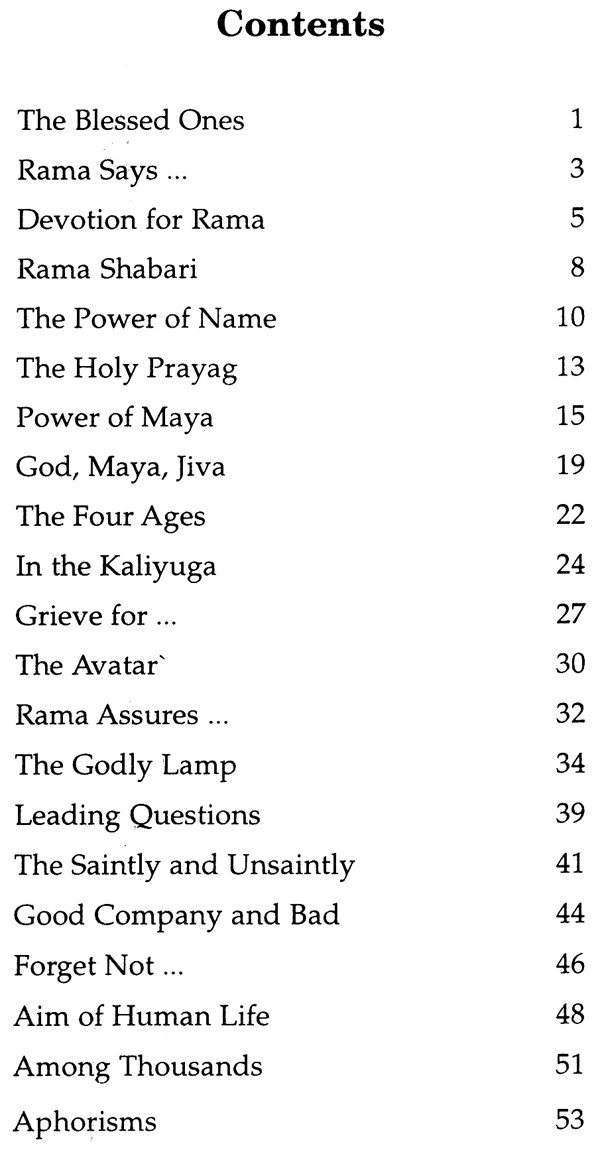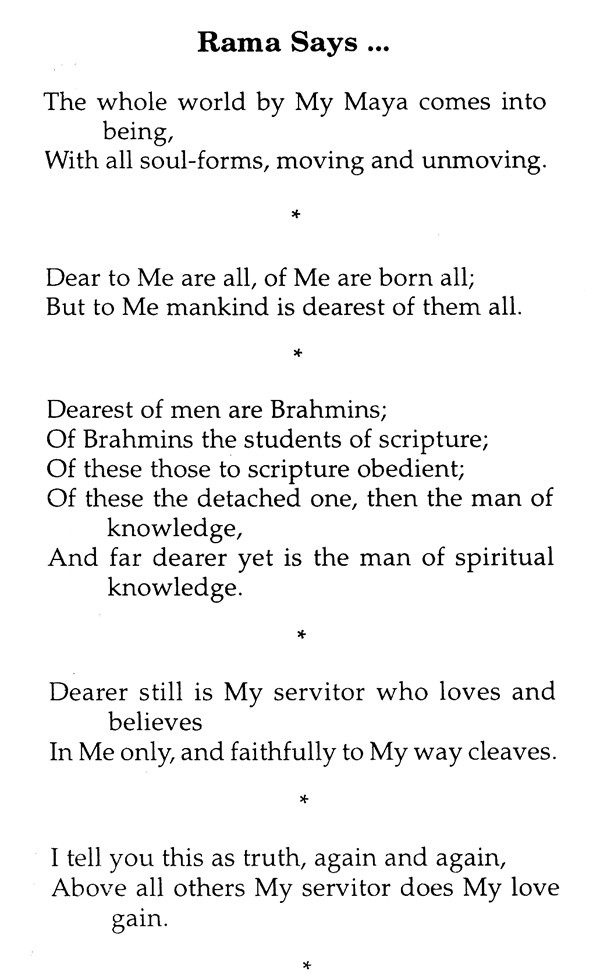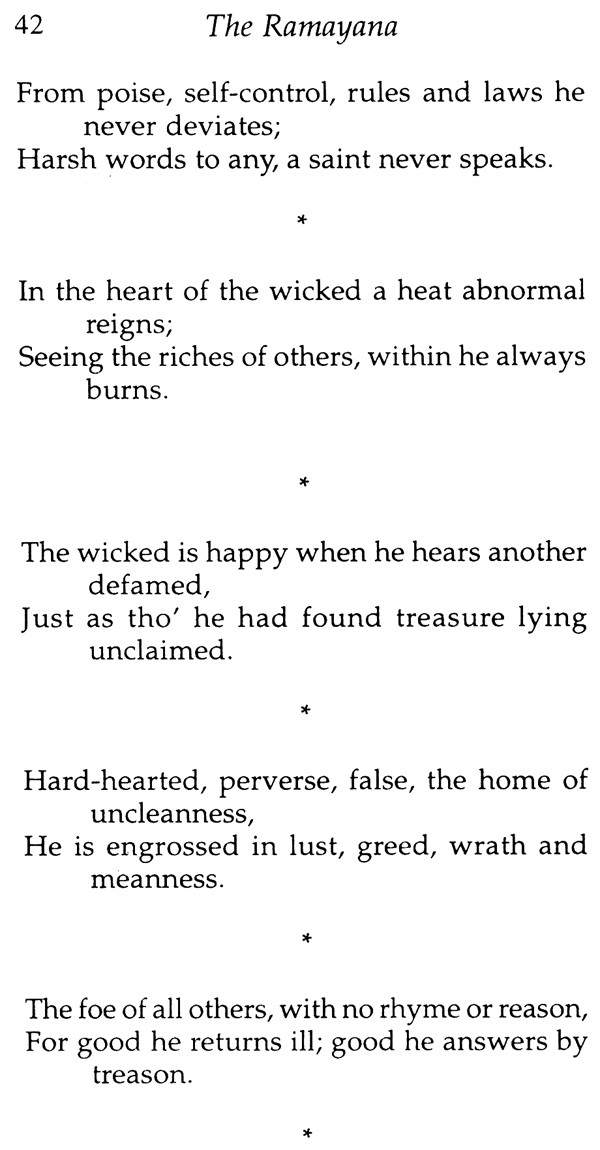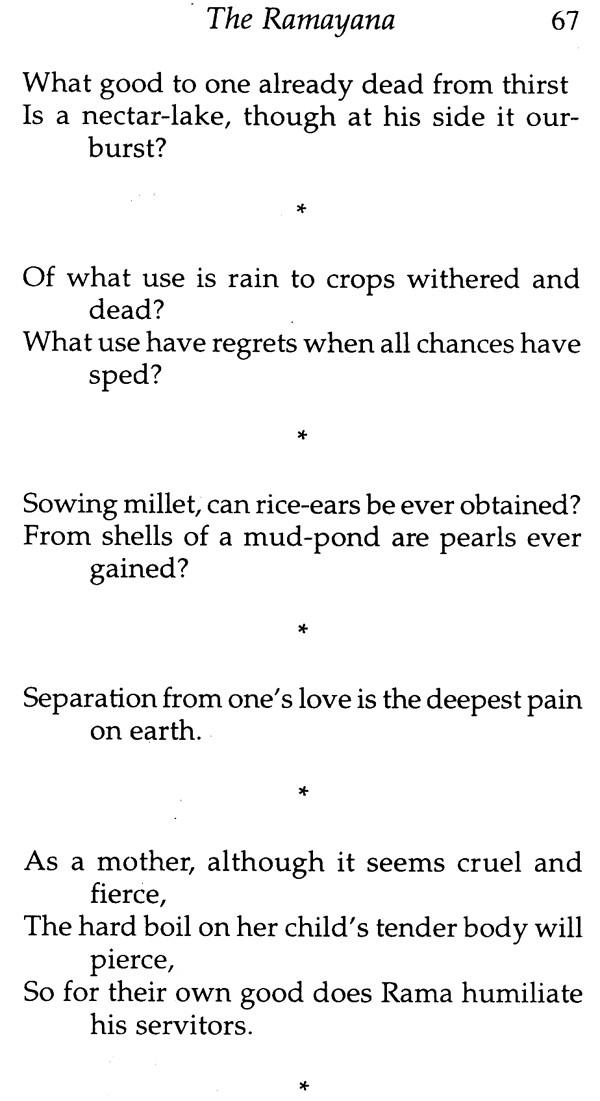
Gleanings From The Ramayana
Book Specification
| Item Code: | NBZ672 |
| Author: | Shyam Sunder Jhunjhunwala |
| Publisher: | Sri Aurobindo Ashram, Pondicherry |
| Language: | English |
| Edition: | 1999 |
| Pages: | 76 |
| Cover: | PAPERBACK |
| Other Details | 7.00 X 5.00 inch |
| Weight | 100 gm |
Book Description
There is hardly an Indian in the North, be he literate or illiterate, who has not heard of the Ramayana of Tulasidas. Among the illiterates in the villages and the emigrants to the cities, long passages from the Ramayana have passed down from generation to generation through oral recitations, individual and collective.
My acquaintance with the Ramayana started in the early 1930's when I was a young boy. Every night after dinner I joined my mother and elder sister as a part of the family discipline in reading the Hindi Ramayana. It was a bulky volume in large print and large size and there was a folding wooden frame on which it was placed while reading, both for the sake of better readability and of proper handling of the book. We read this enlightening book joyfully in the light of the lantern until electricity came to our place.
The daily readings of Ramacharitamanas in those days must have' facilitated from my subconscious the task of selection of pieces from the great epic, and the translations in English seen by me must have helped me in the work of translation for which I must acknowledge thanks and also my gratitude to the saint poet Tulasidas for his immortal gift of the Ramayana to humanity.
What is the significance of Rama and his life-story? For that this Foreword is followed by a page of introduction in the words of Sri Aurobindo.
The Ramayana is in its ethical intention the parable of an enormous conflict between the Deva in human form and the incarnate Rakshasa, between the representative of a high culture and Dharma and a huge unbridled force and gigantic civilization of the exaggerated Ego.
Life-work of Rama, the Avatar
To destroy Ravana and to establish the Ramarajya - in other words, to fix for the future the possibility of an order proper to the sattwic civilized human being who governs his life by the reason, the finer emotions, morality, or at least moral ideals, such as truth, obedience, co-operation and harmony, the sense of domestic and public order, - to establish this in a world still occupied by anarchic forces, the Animal mind and the powers of the vital Ego making its own satisfaction the rule of life, in other words, the Vanara and Rakshasa ... this is the meaning of Rama and his life-work.
Rama, Friend of All
A faithful husband and lover, a loving and obedient son, a tender and perfect brother, father, friend - he is friend of all kinds of people, friend of the outcast Guha, friend of the Animal leaders, Sugriva, Hanuman, friend of the vulture Jatayu, friend of even Rakshasa Vibhishana.
Book's Contents and Sample Pages










